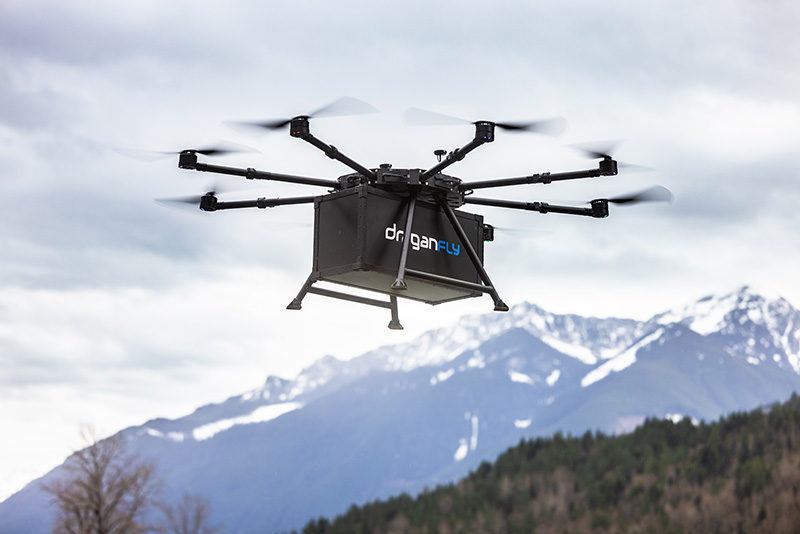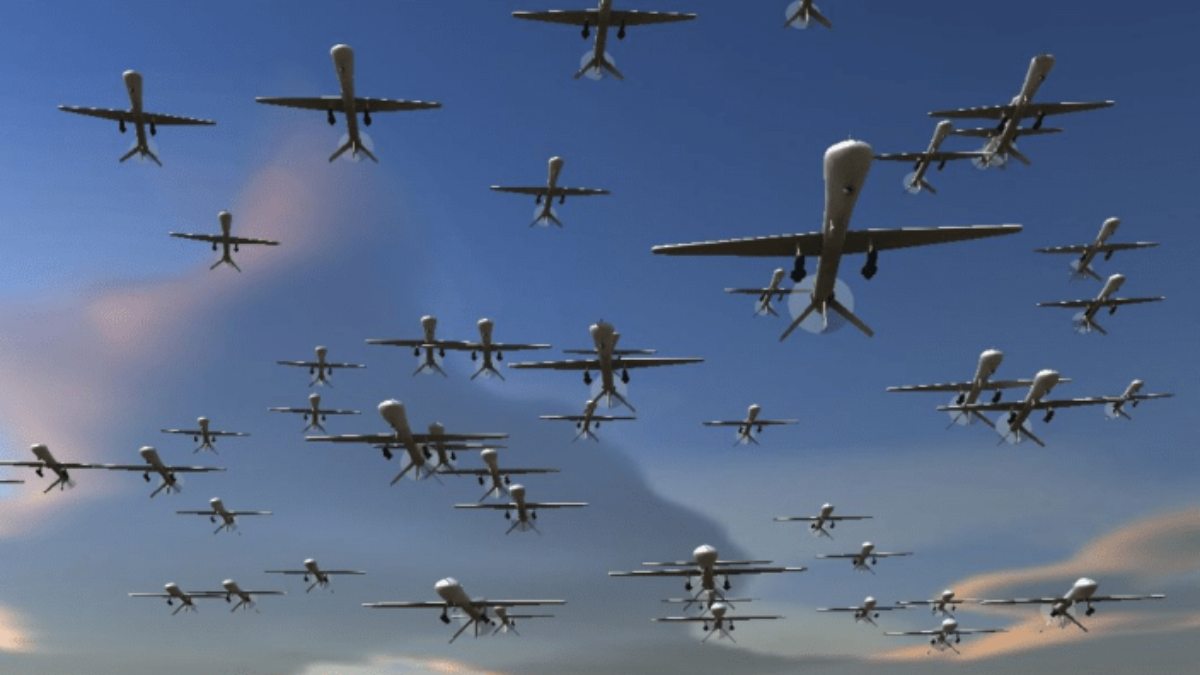The Ukraine-Russia war is the first in the world that has seen the extensive application of AI-driven military technologies, and the data is important for the further development of emerging technologies for future warfare.
Indian Pinaka Rockets ‘Ruffle’ Azerbaijan; Media Claims New Delhi Arming Armenia With Deadly Weapons
Global firms are making a beeline for Ukraine to gain access to this hard-to-come-by data to help improve Artificial Intelligence and Machine Learning.
Initially welcoming any firm offering them technology, Ukraine has become more aware of the importance of the data and is more discerning about its distribution. The country now wants to use the invaluable data to help develop its defense industry.
Air dominance from 10,000 feet down is now dominated by small drones, and companies worldwide want a share of the market and data pot in Ukraine. Draganfly, a leading company in the field of drones, has otherwise been selling UAVs and its software for emergency services like delivering medical equipment and filming traffic accidents in North America.
The company also provides custom-made drones for military problems like mapping, surveillance, reconnaissance, communication, and tactical delivery. But recently, it opened an office in conflict-ridden Ukraine with four full-time employees.
The firm has supplied Ukraine with 40 Draganfly drones at a discounted price. They are repurposed for carrying out search-and-rescue missions, landmine detection, and other unspecified military tasks.
It is not just the money or the market that has enticed Draganfly to open an office in Ukraine. It is the lure of invaluable data that the war is generating. After all, AI systems are only as good as the data that they are trained on.
The CEO of Draganfly, Cameron Chell, has been quoted as saying: “Everybody could have the same AI engine. The only differentiator now is how good the data inputs that you have.” “Making sure that it’s your sensors collecting that data, and feeding it into your software, is important. It’s more important than ever to be present,” he adds.
Draganfly is not the only high-tech company trying to lay its hands on the data – often dubbed as new age’s oil. Executives from global firms have been flocking to Ukraine to test and train their products in a contested space rather than in a controlled environment. Data analytics company Palantir has opened an office in Kyiv and is offering its services for free.
In a world where nothing is free, the company has set its eyes on the valuable data the battlefield offers.

“The Ukraine conflict is the first serious skirmish while the world is at the cusp of AI/ML (Artificial Intelligence/Machine Learning) application in warfare logics, many of the conventional and traditional warfare tactics (well established over the last century) has not been able to give outcomes expected, and AI is decision support systems (DSS) needs this specific data,” Commander Milind Kulshrestha, a former Indian Navy veteran and an expert in C4I (Command, Control, Communications, Computers, and Intelligence), told the EurAsian Times.
He undertook the ab-initio design, development, and successful onboard deployment of the first of the indigenous Naval Combat Management systems (CMS) for modern warships of the Indian Navy.
AI is going to play a pivotal role in future warfare. Noting this, the US Department of Defense’s fiscal 2024 budget allocated US$1.8 billion for AI. Joint All Domain Command and Control is the Pentagon’s vision of a wholly networked military where information flows seamlessly and securely from land, air, sea, space, and cyber.
The defense department has listed at least 685 ongoing AI projects as of early 2021. Many of them involve major weapons systems. High-quality data is foundational to all of its pursuits.
“C4I systems are highly dependent on DSS, as it forms the core… The Ukrainian conflict has land, sea, and air power components integrated, which AI/ML doesn’t usually get to train its algorithms on. Thus, the Ukraine event is a unique opportunity,” Commander Kulshrestha added.
Also, a highly one-sided conflict has seen zone-wise exploitation of systems. Electronic warfare spectrum use has been very measured.
AI In War Zone
AI generally refers to computer systems that imitate human cognitive intelligence. They can be programmed to learn, reason, problem-solve, and perceive. Two of its subsets are machine learning, where systems learn from data fed into it to improve their performance and deep learning, a more complex form of machine learning modeled on the human brain.
AI has vast deployment in the defense sector. It can provide autonomous systems reducing risk to human soldiers, can provide predictive analytics forecasting potential threats and cyber security to fight against cyber threats. It can be used to create highly realistic combat simulations for training purposes.
“Any data used after landing (of a drone) is priceless. It allows us to gauge important data like the response times, the radius of turn, latency, the ability of the camera to focus, so forth and so on. Testing in the backyard doesn’t give the same feedback. The drone has to fly to its limit,” an Indian defense official told the EurAsian Times, requesting anonymity.

He adds: “If you can analyze data from 100 missions (called used cases), you can make comparisons. Operational utilization of the system is very different from peacetime. We never realize their limitations and capabilities unless deployed in battle.” It can be used to better next-generation systems.
In the initial days of the war, Ukrainian soldiers deployed drones from companies that were yet to get a nod from the US Department of Defense. Ukraine now recognizes that the data will be valuable.
“You can’t even imagine how many foreign companies are already using Ukraine as a testing ground for their products: AI companies like Clearview, Palantir; anti-jamming systems; everything that has a software component is in Ukraine right now,” Alex Bornyakov, Ukraine’s deputy minister for digital transformation told a news outlet. The Ukraine battlefield data gives a great insight into issues like managing troops and managing them smartly and automatically.
There have been claims from the Ukrainian side about 300 companies supplying drones to Ukraine. One such company is Germany-based AeroDrone which has been supplying UAVs for crop spraying. Its Ukrainian founder Yuri Pedri returned to his homeland and forayed into UCAVs (unmanned combat aerial vehicles). Now the company’s UAV carries up to 300 kilograms of payload on the battlefield.
The company is collecting vast amounts of data from the mission flights by measuring up to 3,000 parameters on each flight. The data can be used to repurpose drones for other industries or conflicts; after all, if a drone can fly in a warzone, it can fly anywhere.
AI Wars – The US Vs. China
The sluggish procurement policy of the Pentagon is eroding its technological edge over China in the field of AI in defense systems. The US House Armed Services Committee convened a 90-minute hearing on July 19 to ascertain how the US can get AI supremacy over China.
China is spending between 1 to 1.5 percent of its military budget on AI. In comparison, the US is spending a meagrely 0.1 to 0.2 percent of its military budget. Adjusted for the total military budget, China is spending ten times more than the US.
“One of the challenges in adopting AI in the government, in particular the Department of Defense, is the slow procurement process,” Haniyeh Mahmoudian, an ethicist at the AI platform DataRobot, told lawmakers. “AI is an evolving space, and long procurement cycles and delays can lead to obsolete AI tools that will require retraining due to changes in data over time.”
Alexandr Wang, the founder and CEO of data processing company Scale AI told the lawmakers: “AI systems are only as good as the data that they are trained on. The DoD creates more than 22 terabytes of data daily. Because of their outdated data retention and management policies, warfighters, analysts, and operators cannot tap into its full potential because it is not AI-ready.”
It was only in 2022 that the Pentagon appointed a chief digital and artificial intelligence officer. The position will be leading and overseeing the Department of Defense’s strategy development and policy formulation for data, analytics, and AI; breaking down barriers to data and AI adoption within appropriate DOD institutional processes; and creating enabling digital infrastructure and services that support Components’ development and deployment of data, analytics, AI and digital-enabled solutions.
- Ritu Sharma has been a journalist for over a decade, writing on defense, foreign affairs, and nuclear technology.
- She can be reached at ritu.sharma (at) mail.com




